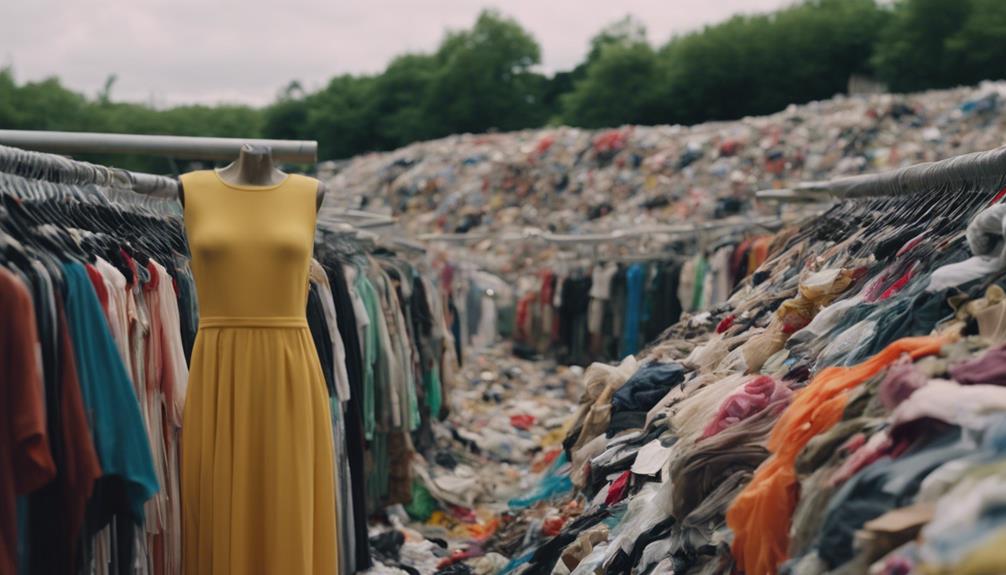The sustainable fashion industry faces serious issues that may not be widely understood. Many brands falsely market their products as “eco-friendly,” despite the fact that the sector actually produces 92 million tonnes of waste every year. Recycling and rental initiatives do not tackle the underlying causes of this waste, and only a small number of brands truly prioritize genuine sustainability. Without stringent regulations, companies can easily make unsubstantiated claims without consequence. It is crucial for consumers to grasp the intricacies of these claims and their impact on decision-making. If you are interested in uncovering more startling truths about this sector, continue delving into the topic!
Key Takeaways
- Sustainable fashion's environmental impact has remained unchanged for 25 years, highlighting the inefficacy of current practices.
- Many fast fashion brands mislabel products as eco-friendly, contributing to widespread greenwashing and consumer deception.
- Recycling and rental models fail to address the root causes of textile waste, further exacerbating the industry's sustainability crisis.
- Only 12% of clothing material is recycled globally, demonstrating significant inefficiencies in waste management within the fashion sector.
Industry Claims Vs. Reality
In the domain of sustainable fashion, there's a stark contrast between the industry's lofty claims and the harsh reality of its environmental impact. You might be surprised to learn that, despite the buzz around sustainability, the overall footprint of clothing production hasn't changed in the last 25 years.
Fast fashion retailers often tout products as eco-friendly or carbon positive, but these claims rarely translate into genuine sustainability. Many of these items are still made from petroleum-based materials that don't biodegrade.
You see, while companies market their offerings as “less unsustainable,” this doesn't mean they're truly sustainable. In fact, a staggering 92 million tonnes of clothing are discarded annually, revealing a massive disconnect between what's advertised and what actually happens. The industry's reliance on quick trends leads to wastefulness rather than responsible practices.
Regulatory intervention is vital to hold companies accountable for their environmental impact. Without it, the current market-based solutions are failing to tackle the sustainability crisis effectively.
It's imperative for consumers like you to question these claims and demand more transparency in sustainable fashion.
Failed Innovations and Strategies
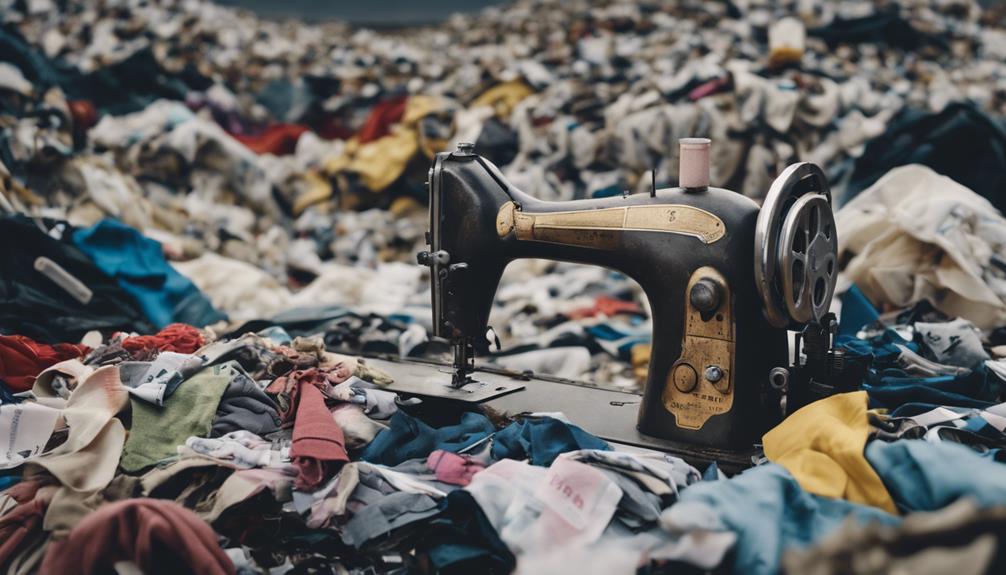
Despite the introduction of innovative solutions, sustainable fashion struggles to make a meaningful impact on the industry's environmental footprint. Many high-profile innovations like bio-based materials and recycling initiatives haven't led to significant change. Fast fashion continues to dominate, and strategies like rent-the-runway have largely failed to resonate with consumers.
Here's a stark comparison to help illustrate the issue:
| Failed Innovations | Environmental Impact |
|---|---|
| Bio-based materials | Minimal reduction in waste |
| Rent-the-runway strategies | Limited consumer adoption |
| Recycling initiatives | Not addressing overproduction |
The misconception that sustainability exists on a spectrum leads to the false belief that 'less unsustainable' practices are sufficient. In reality, such practices don't equate to true sustainability. With only 10% of the fashion sector committing to Science Based Targets (SBTs), it's clear that there's a lack of genuine commitment among companies. Market-driven solutions haven't addressed the sustainability challenges effectively, highlighting the need for regulatory intervention to promote responsible practices in the fashion industry.
Need for Regulatory Intervention
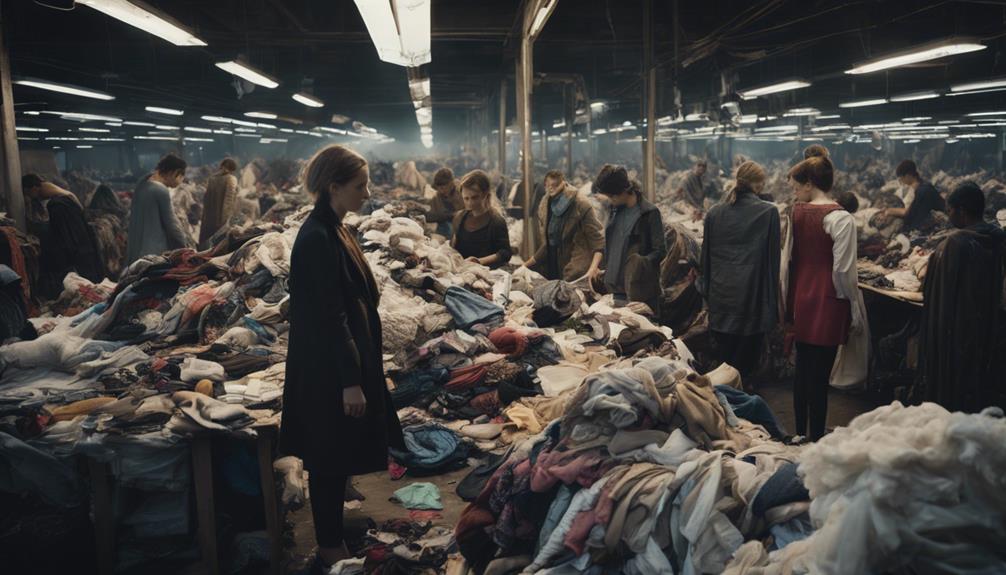
Regulatory intervention is essential to hold fashion companies accountable for their environmental impact and drive meaningful change in sustainability practices. Despite the industry's claims of embracing sustainable fashion, the reality is stark. Over the past 25 years, the environmental impact of fashion hasn't improved, revealing a pressing need for robust regulatory frameworks. These frameworks can enforce real accountability among fast fashion brands, which often prioritize profit over genuine sustainability.
Current voluntary strategies, like using bio-based materials and recycling, are insufficient. They haven't led to significant reductions in environmental harm, exposing the limitations of market-based solutions. Without government intervention, companies can continue to promote a progressive image while failing to make genuine strides toward sustainability.
The misconception that sustainability exists on a spectrum allows brands to engage in 'less unsustainable' practices rather than committing to true sustainable development. By establishing regulations, you can help bridge the gap between the industry's claims and its actual impact.
With stronger oversight, we can guarantee that fashion companies take responsibility for their actions, ultimately fostering a more eco-conscious industry that benefits everyone.
Business Models and Limitations
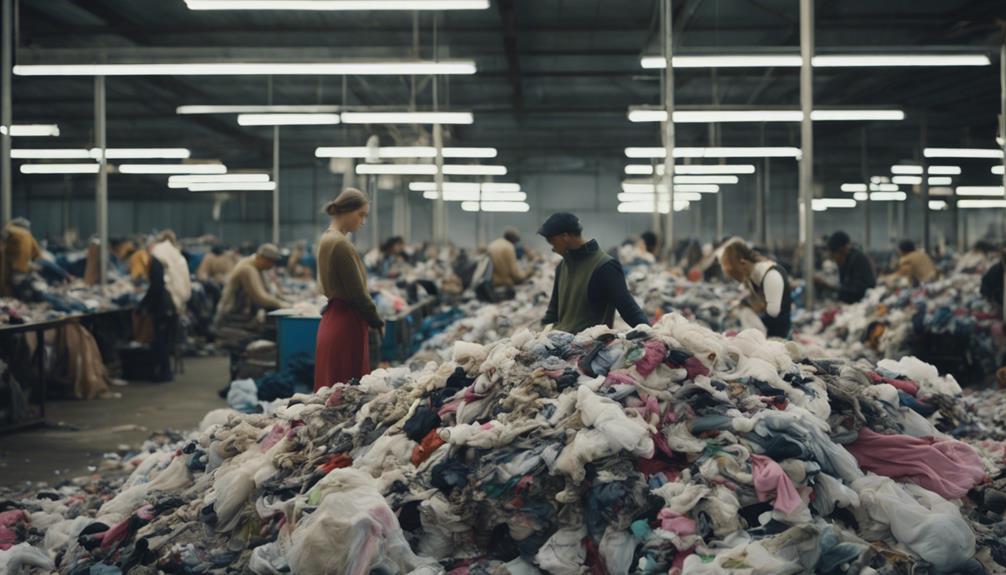
Current business models in sustainable fashion, such as recycling and rental, often fail to deliver meaningful reductions in environmental impact. While these models are marketed as eco-friendly solutions, they rarely address the root causes of issues like textile waste. For instance, even though 40% of consumers are open to circular business models, most users simply repeat usage without tackling fast fashion's excessive production.
The fashion industry continues to produce twice as many garments today compared to 2000, which exacerbates the growing problem of textile waste. Despite the introduction of practices like recycling, only 12% of clothing material gets recycled globally. This inefficiency points to complex material compositions that complicate recycling efforts, undermining claims of sustainability.
Moreover, just 10% of the fashion sector has committed to Science Based Targets (SBTs), reflecting a lack of genuine commitment to sustainability. As you can see, while some business models appear promising, they often fall short of making a significant impact.
To truly shift the paradigm, the industry must go beyond surface-level solutions and confront the unsustainable practices that continue to thrive in fast fashion.
Future of Sustainable Fashion

The future of sustainable fashion hinges on a systemic change that prioritizes genuine environmental care over flashy marketing.
You'll need to see how collaboration among brands, consumers, and regulators can spark innovative solutions to tackle the industry's core issues.
Systemic Change Required
Recognizing the need for systemic change, the fashion industry must tackle the root causes of environmental degradation to create a truly sustainable future. Genuine progress in sustainable fashion requires collective efforts that go beyond isolated innovations. Currently, only 10% of companies have approved Science Based Targets, underlining the urgent need for broader industry commitment.
To visualize the necessary changes, consider the following table:
| Focus Area | Current Situation | Desired Change |
|---|---|---|
| Consumer Behavior | Only 12% of clothing recycled globally | Higher recycling rates |
| Industry Commitment | 10% with Science Based Targets | 100% by 2050 |
| Collaborative Efforts | 50% engage suppliers on green goals | 90% across the sector |
To achieve sustainable models like recycling and renting, consumer behavior must align with industry practices. Education on true sustainability impacts is crucial, as findings show that 92% of Indian adults are willing to pay more for sustainable products. By fostering systemic change, we can greatly reduce the environmental impact of fashion.
Collaborative Industry Efforts
Collaborative industry efforts are essential for shaping the future of sustainable fashion, as they unite brands and stakeholders in a collective mission to achieve net-zero emissions and embrace circular business models.
Initiatives like the Fashion Charter, established in 2018, have attracted 130 signatories, including big names like H&M and Chanel, all aiming for net-zero by 2050. However, with only 10% of the fashion sector adopting Science Based Targets (SBTs), there's still a significant accountability gap.
The consumer's growing interest in sustainability offers a unique opportunity for collaboration. Research from WRAP shows that many are open to circular business models, such as rental and repair, which could transform how we view fashion. The secondhand apparel market is booming, expected to grow from $96 billion in 2021 to $218 billion by 2026, showcasing the demand for sustainable and collaborative solutions.
Moreover, raising consumer awareness about the environmental impacts of fashion is vital. Education initiatives can empower consumers to make informed choices, driving industry-wide changes towards more sustainable practices.
Importance of Sustainability in Business

In today's market, you can't ignore the demand for eco-conscious products.
Consumers are increasingly seeking authenticity and are quick to spot greenwashing tactics.
If your brand wants to thrive, embracing genuine sustainability is essential.
Eco-Conscious Consumer Demand
Growing eco-conscious consumer demand is reshaping how businesses approach sustainability, pushing them to integrate genuine environmental practices into their core strategies. Today, a staggering 92% of Indian adults are willing to pay more for eco-friendly products, highlighting a significant shift in consumer demand for sustainable options. This change isn't just a trend; it reflects a fundamental expectation that brands must meet.
Post-pandemic, sustainability has become a central theme in marketing strategies. Companies know they risk backlash for superficial efforts that don't translate into real environmental responsibility. For instance, Unilever's Sustainable Living Brands experienced a 69% faster growth rate than their competitors in 2018, proving that a true commitment to sustainability can enhance financial performance.
Moreover, the emergence of future generations as a stakeholder group emphasizes the importance of long-term environmental health in business decision-making. Consumers increasingly value transparency and accountability, so brands that authentically commit to sustainability can foster stronger customer loyalty. As the eco-conscious movement grows, businesses that embrace these principles won't only thrive but also contribute positively to the planet.
Authenticity Over Greenwashing
Authenticity in sustainability is no longer just a marketing buzzword; it's become essential for building trust and loyalty among today's eco-conscious consumers. With the rise in consumer awareness, brands can no longer afford to engage in greenwashing—superficial marketing efforts that lack genuine commitment to sustainability.
To truly resonate with your audience, consider these key aspects:
- Genuine Practices: Align your marketing claims with actual ethical practices.
- Consumer Expectations: Understand that over half of consumers are now willing to buy secondhand, emphasizing a desire for authenticity.
- Positive Impact: Brands like Unilever demonstrate that those with authentic sustainability initiatives grow considerably faster.
Paradoxes in Brand Purpose
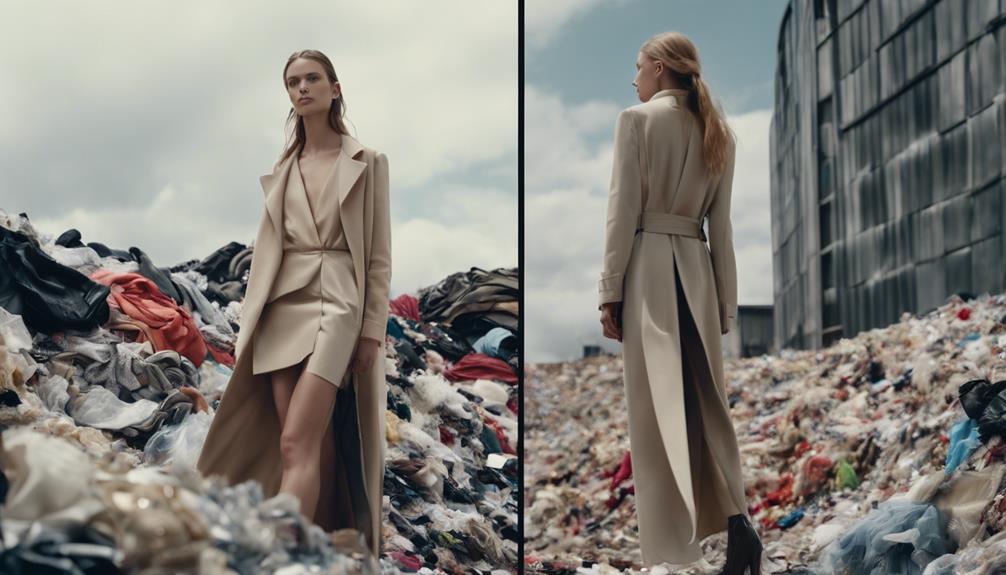
While brands increasingly embrace purpose-driven marketing, they often struggle to balance genuine sustainability efforts with the pressures of profitability.
You might notice that many companies tout a strong brand purpose, but their actual commitment to sustainability can sometimes feel superficial. This disconnect can lead to mixed consumer perceptions, especially as shoppers become more discerning about the authenticity of these claims.
Consumer understanding of brand purpose is constantly evolving, which means brands must actively engage and educate their audience about real sustainability initiatives. If they don't, they risk backlash as consumers grow aware of the gap between marketing promises and actual practices.
Furthermore, companies that engage in 'lip service' sustainability can severely damage their reputation, making it harder to regain consumer trust.
To navigate these paradoxes, brands need to strike a balance between their purpose-driven ambitions and traditional business objectives. While the potential for growth exists—like the impressive performance of Unilever's Sustainable Living Brands—investor skepticism about the impact on overall performance remains.
Ultimately, it's essential for brands to avoid superficial efforts and focus on authentic sustainability to foster long-term loyalty and credibility.
Safety Concerns in Consumer Products
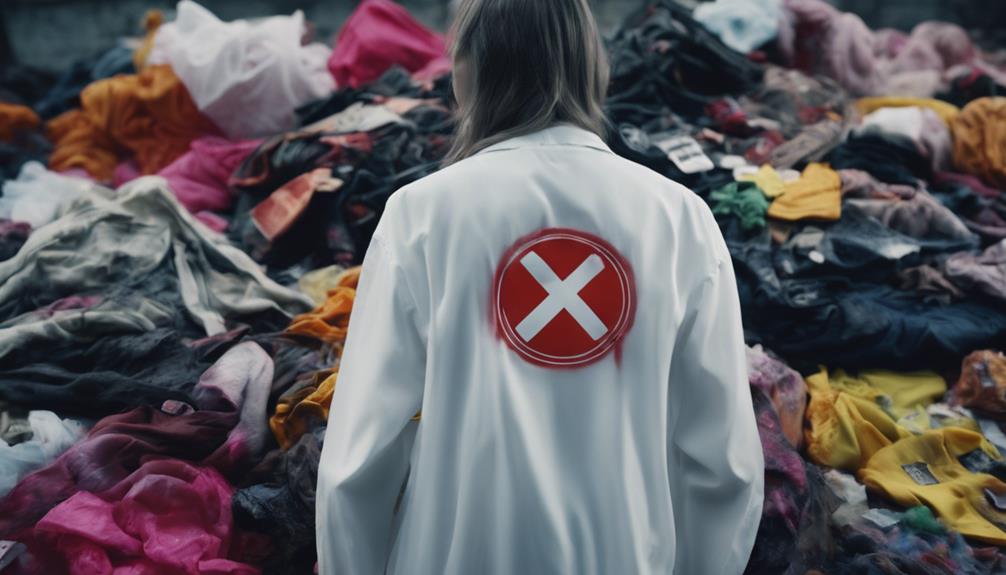
As consumers become increasingly aware of safety issues, brands must prioritize transparency and ethical practices in their product offerings to maintain trust. The pandemic has heightened your awareness of safety in consumables, leading you to seek products that not only promise sustainability but also guarantee safety.
Here are some key points to reflect on:
- The rise of brands like Hermes entering cosmetics with a focus on safety highlights a shift towards prioritizing safety alongside sustainability.
- Safety concerns have emerged around natural products, like kratom, which have been linked to fatalities, reminding you to scrutinize safety claims.
- Transparency about product safety is crucial; inconsistencies between claims and actual practices can quickly erode consumer trust.
Transparency and Accountability
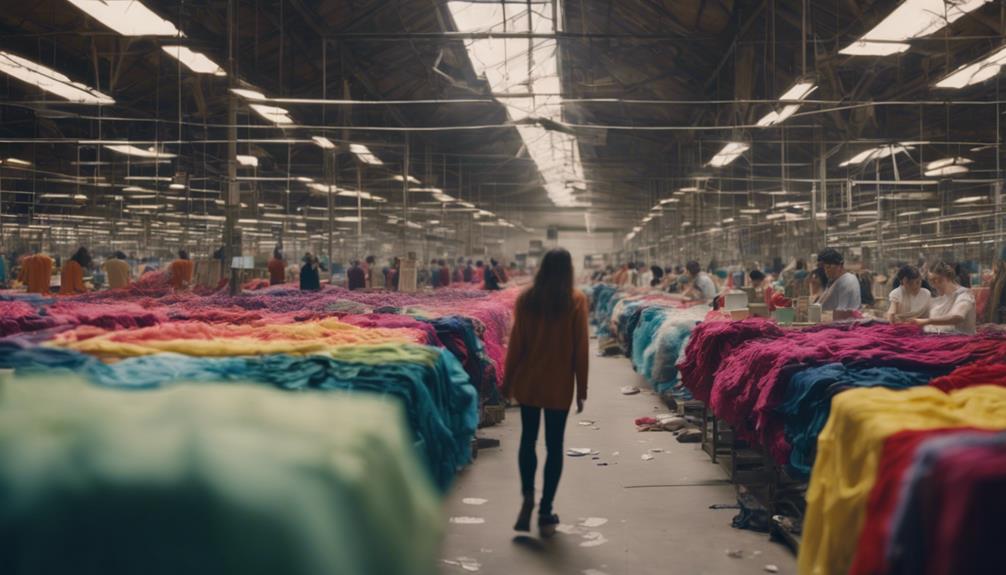
With safety concerns driving demand for ethical practices, transparency and accountability have become essential for brands looking to build and maintain consumer trust. Unfortunately, many fashion companies still fall short. For instance, while brands like Everlane tout radical transparency in pricing and production, discrepancies—like unaddressed racial bias—raise doubts about the authenticity of these claims.
A staggering 84% of fashion companies don't guarantee their factories pay living wages, showcasing a significant lack of accountability in ethical labor practices. When brands fail to align their ethical commitments with their transparency promises, they risk losing consumer trust, as Everlane has experienced after troubling revelations about its internal culture.
Moreover, the effectiveness of transparency initiatives is often limited. Only 10% of the fashion sector has approved Science Based Targets for emissions reductions, underscoring an urgent need for accountability in sustainability commitments. Brands must substantiate their claims to maintain credibility; otherwise, they erode consumer confidence and loyalty.
To genuinely embrace sustainability, the industry must prioritize transparency and hold itself accountable, ensuring that ethical practices aren't just marketing buzzwords but real commitments.
Trends in Sustainable Consumer Behavior

Sustainable consumer behavior is rapidly evolving, driven by a growing desire for eco-friendly products and ethical practices. You're likely noticing how these trends are reshaping the market and influencing your buying choices.
Here are some key shifts in consumer behavior:
- Willingness to Pay More: 92% of Indian adults are ready to invest in sustainable products, reflecting a strong demand.
- Acceptance of Secondhand: Over half of consumers now embrace buying secondhand clothing, showcasing a commitment to circular consumption.
- Repairing Clothes: Around 60% of consumers actively maintain and repair their clothes, indicating a shift towards sustainability and longevity in fashion.
These trends highlight a significant transformation in consumer buying patterns. As you consider your own choices, remember that opting for sustainable products not only benefits the planet but also aligns with the values shared by a growing community.
Embracing sustainable fashion isn't just a trend; it's a lifestyle shift that echoes your commitment to a more responsible world. As we strive to minimize our impact on the environment, it is important to address the barriers to sustainable fashion that currently exist. These barriers may include limited access to ethically-produced clothing, higher costs for sustainable materials, and a lack of awareness about the environmental and social impact of fast fashion. By recognizing and actively working to overcome these barriers, we can make sustainable fashion more accessible and appealing to all consumers. By doing so, we can make a positive impact on the planet and the people who inhabit it.
Frequently Asked Questions
What Is the Problem With Sustainable Fashion?
You'll find that sustainable fashion often masks deeper issues. Many brands prioritize profit, leading to superficial commitments rather than real change. Without addressing these root causes, the industry's environmental impact won't improve markedly.
Do People Really Care About Sustainable Fashion?
You might think people really care about sustainable fashion, and many do. However, despite interest, purchasing habits often contradict intentions. It's essential to bridge this gap, turning awareness into meaningful, sustainable choices in your wardrobe.
Why Most of Fashion Today Is Not Sustainable?
Most of today's fashion isn't sustainable because it relies on cheap, non-biodegradable materials and promotes a throwaway culture. You're often left with garments that quickly end up in landfills, contributing to significant waste and pollution.
What Are the Negatives of Sustainable Clothing Brands?
Sustainable clothing brands can mislead you with greenwashing, using non-biodegradable materials while promoting circular models that often don't tackle waste reduction. You might find their claims confusing, making it tough to choose genuinely sustainable options.
Conclusion
In the quest for sustainable fashion, it's vital to see beyond the glittering claims.
Did you know that only 1% of the world's clothing is recycled into new garments? This stark statistic highlights the vast waste in our wardrobes.
As you consider your next purchase, remember: true sustainability requires transparency and accountability.
By demanding better practices, you can help shift the industry toward a genuinely sustainable future, where every piece you buy has a purpose beyond profit.
